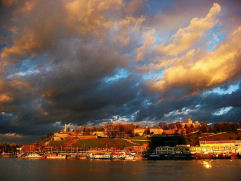
THE BEGINNING OF THE REVOLT AGAINST THE DAHIAS
<background
The Heavenly Omens
The blind poet paints some dramatic pictures on the Serbian skies, calling them omens of the forthcoming dramatic events.
Many commentators tend to look at this part of the poem as a mythological, legendary one. Compared to the rest of the poem, where Višnjić mentions the events in a factographic manner, it does look so - at the first glance, at least
Others, impressed by the poet's obvious and strong loyalty to the fact, search for the explanation among the natural events in the sky. Of course, the Moon and the Sun eclipses have been a very popular choice, as well as the comets or even meteorite swarms. Astronomical chronicles have been consulted, too, of course.
There has been a number of attempts to explain the Višnjić's references to heavenly events. One of the less well known has been written by Milutin Radošević, a meteorology lecturer of the Belgrade University, quite a time ago. He published the article in the 1938 Almanach of the Geographic Society. Luckily, someone who has read a copy of this almanach somewhere, recognized the value of the work and published a report in an online-magazine.
Radošević reminds us of an aspect which probably helped the poet very much, alongside his enormous, blind man's curiosity. He would get very straight answers, because his Serb reporters considered lying to a blind man a sin. Even if the poet's descriptions of the events in the sky are condensed and rather cryptic to our today's vocabulary, the devotion of the poet to the truth does make us think twice about the legend, the simplest explanation that is offering itself.
The first omen
'From the Triphon, to the day Saint George's,
Each night the moon caught itself in heaven,..'
The expression 'sunce (ili mesec) se vataše' -'the sun (or the moon) has been catching itself ' is quite outdated, archaic, and it is not easy to be quite certain of all it's possible meanings and more or less precise applications. The examples of it's being used to describe an ecclipse can be found. Observing an ecclipse as an reflection on the surface of water in a shallow bowl is reported to have been an usual practice among the Serbs at these times. The phrase has been explained as one originating from the 'catching' of the sun's image in the bowl.
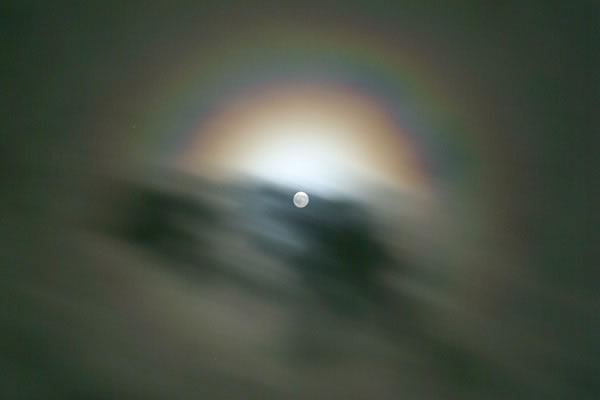
The Moon's Halo and Corona are luminescent rings around the moon. Surrounding it, they look like a 'capturing' loop - and that fits the expression 'the moon caught itself' quite well, too. It is imaginable that Višnjič used this term, missing any other and closer ones. Typical Serb observer and Višnjić's reporter, just like himself, wouldn't know the astronomical explanations of sky events and if anything was happening with the moon, the chances are, it would be described under this one term.
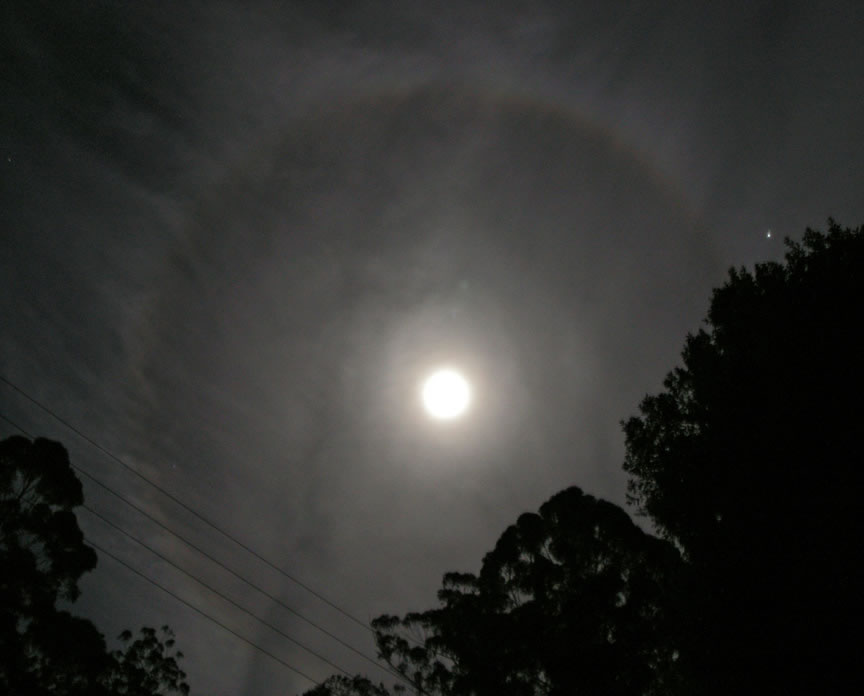
The usual explanation for these two lines was a Moon's eclipse, which then repeats itself many nights in a succesion. There is no such thing in the nature, and it would mean the poet's exaggeration or inclusion of a legend into his poem. It is a possibility, too, of course.
Now, Radošević points out - when Višnjić means eclipse, he says it:
Line 442:
As the both of the Serb knezes perished,
On the bridge there, amidst Kolubara,
Knez Aleksa, Birčanin Ilija;
Adži-Ruvim in the midst of Belgrade,
On the same day, at the same hour as well,
The fiery sun above them darkened.*
Moreover, Radošević insists, Višnjić must be describing the events that really happened, just as precisely as he does in the rest of the poem. Being a meteorologist, he did some careful research, eliminating the numerous explanation candidates among the natural phenomena of the sky. Here the choice narrowed down to the moon's halo-related ones.
Even the poet's dating of the moon-event has been misusnderstood, says Radošević. St. Triphon (12. of February) and St. George's days (4. of May) have some 80 days between them. But it is the St George of Kratovo, on February, 22. that has really been meant, explains Radošević. This makes for the sequence of 10 nights.
Moon's halo can repeat itself on several nights in a sequence. It is an effect of refraction and diffraction of the moonlight on the ice or dust particles in the stratosphere.
A halo variation named 'Bishop's Ring' appears after strong volcanic erruptions which eject quantities of dust into the stratosphere. It can last for days or weeks even, and it is quite eye-catching, compared to the usual ice partcle caused variation.
Radošević considers the 1784 as the most probable year of the event ; An Icelandic volcano erupted the year before.
So, a Bishop's ring might have been seen around the moon, on every night between the 12. and 22. of February, 1784. For Višnjić – the first sign from the saints to the Serbs to rise against the Turks.
Which of the explanations may be the closest one to what Višnjic had in mind on this particular point - this choice has to be left to the reader.
* Aleksa Nenadović and Ilija Birčanin have been executed on February 4th, 1804, and Hadži Ruvim on February 10th, 1804. A solar eclipse has been recorded on February 11th, 1804. The blind poet's dating cannot be considered quite exact here.
The second omen
'..From Saint George's to the day Saint Dmitre's,
Blood bespotted banners and flags walked
In the clear heavens of Serbia..'
The sky phenomenon most reminding of a banner is aurora, says Radošević:
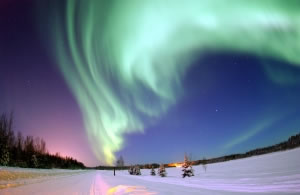
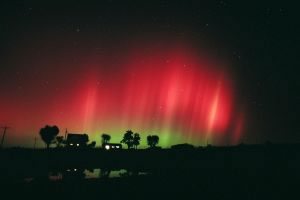
A curtain of light , changing fast it's form and colors, aurora often looks like a pennant or a long banner. It is even moving like a banner does in the wind.
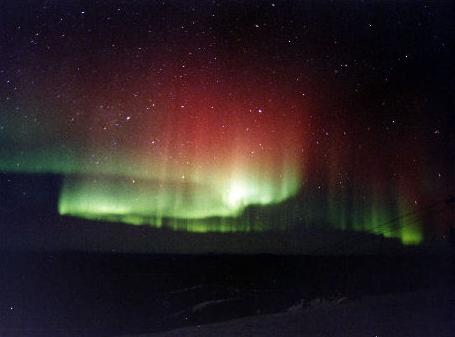
Aurora can be seen regularily in the polar areas; the sightings in the southern Europe are rare. When Aurora does visit the south Europeans, it is in the periods of very high solar activity. One such case has been recorded in 1788; The aurora has been observed in Rome on 4 occasions. Radošević chose this among several other possible instances because it fits at best the poet's dating of these events.
What Višnjić considered the second saint's invitation to the Serbs for a revolt was an appearance of Aurora Borealis in Serbia, far to the south of her usual haunting grounds. It seems to have happened on several occasions between May, 4th to November, 6th 1788.
The usual explanation for these two lines has been a comet sighting. Comparison with the aurora makes this look rather less probable; a comet has quite a static image, which changes in days rather than minutes. The expression of ' bloody banners walking in the sky' matches so well with how the aurora looks - and it looks very much like a waving and flapping banner.
Aurora, video.
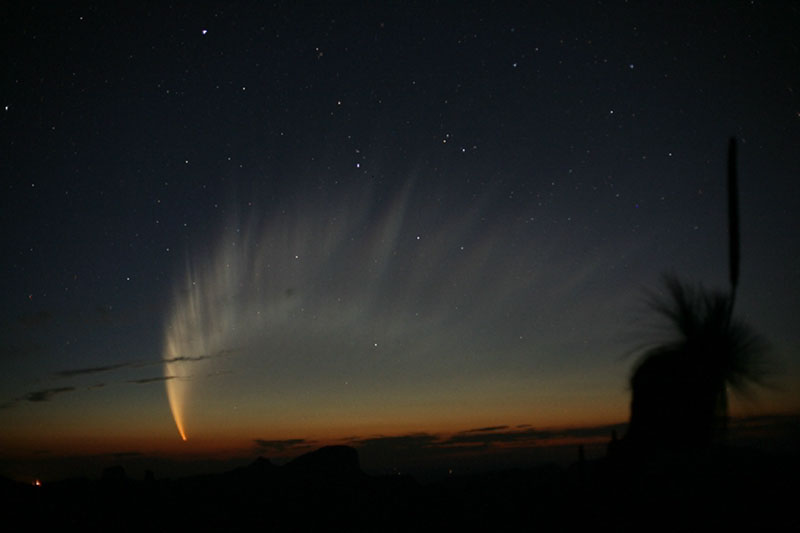
A spectacular photo of the the comet Mc Naught.
The Third Omen
The third omen that the Saints have shown,
Thunder blasted, the day of Saint-Sava's,
Midst in winter, not in it's time proper,
Struck the lightning, the day of Chains Honest,
The earth shuddered from it's eastern skyline
Calling the Serbs to stand to their weapons.
But Serbians, they just did not dare to.
Thunderstorms are quite rare in winter because they need the so called 'instable atmosphere'( moist air getting cooler with the height rapidly) to develop. In practical terms, the air has to be humid and in a strong upwind. Warm ground heats the low air layers in summer, which then move high, beginning such a convection movement.
In winter, the ground rarely gets warm enough but a wedge of cold air, a cold front, can help accelerate the warm and humid air high, creating a thunderstorm.
Radošević quotes an old chronicle describing a thunderstorm and an earthquake on January 14. 1801, Julian calender ( January 26., Gregorian). Another meteorological chronicle describes a warm weather period up to approximately this date, followed by a cold one. This should mean a cold front moving into a mass or the relatively warm air and creating the above described conditions.
Radošević dates this third omen to January 26, 1801, when according to some chronicles an unusual winter thunderstorm and an earhquake coincided in the today's central Serbia.
The Fourth Omen
And fourth omen that the saints have shown,
In the clear heavens of Serbia,
The sun got caught in the early springtime,
In the springtime, on the day Saint Triphon's,
It caught itself three times on this one day,
And three times it twitched in eastern heavens.
Višnjic dates this event to the February, 13th 1804. Astronomical tables record a solar eclipse at noon local time on 11. February 1804. Miloš Obrenović, one of the leaders of the uprising and later the ruler of Serbia, has recounted this eclipse to a friend, Laza Popović, whose son noted this down in his memoirs.
Radošević's interpretation is rather more involved, going into all the detail of the poet's passage. Again, a Bishop's ring is his most likely explanation.
Dust from a volcanic eruption, or the aerosols created by the cosmic rays in the stratosphere can cause a halo-like ring to appear around the sun:
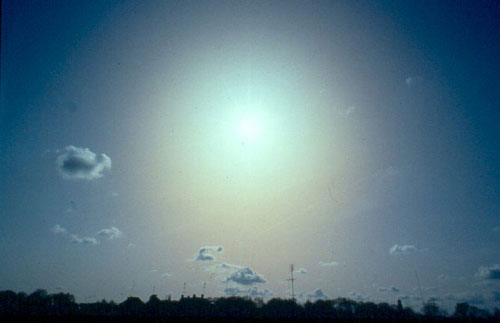
This is an even more spectacular, daylight occurrence of the Bishop's ring, already mentioned above as a Moon optical phenomenon. Here the Sun appears 'caught' by a multicolored ring.
The Vesuvius eruption 1803-1809 or the period of strong cosmic radiation caused by the weak solar activity 1800-1820 could have created the conditions for the appearance of a Bishop's ring.
'Twitching' of the sun on the east horizon is of a quite different nature. This is a refraction phenomenon, known as the mirage or Fata Morgana. A temperature inversion creates layers of air with different refraction properties; as an effect, the sun can appear distorted:

When there are three layers of different density, this can make the sun's image appear almost split in half - or even look like it 'twitches', says Radošević.
Ideal conditions for a temperature inversion appear in a mild winter, like the one in 1804 was; This was a first warm winter after 1801, actually.
Saint Triphon's day is Febrary the 1st, Julian Calendar. 12-day correction for the 19. century makes the Gregorian date February 13th, 1804.
In his text, Radošević used the present day ( 20. - 21. century) 13 days correction; Actually the calendar difference has been 11 days in the 18. century and 12 days in the 19. century. That's the reason the Gregorian dates here and in his text do not coincide exactly.
Radošević seems to have a clear point on the aurora and 'twitching' of the Sun; his other explanations are not that certain. The blind poet had to do with what has been reported to him, and weigh out himself just how accurate these reports have been. Looking for perfect datings and sightings could obviously be misguided here. While this part has obviously been based on some sky events, exact kind and dating of these is not as important as the power of expression of these lines.
An abridged version of the Radošević's article can be found on a page of the online-magazine 'Planeta' in Serbian:
http://www.planeta.org.rs/27/8meteorologija.htm
|





